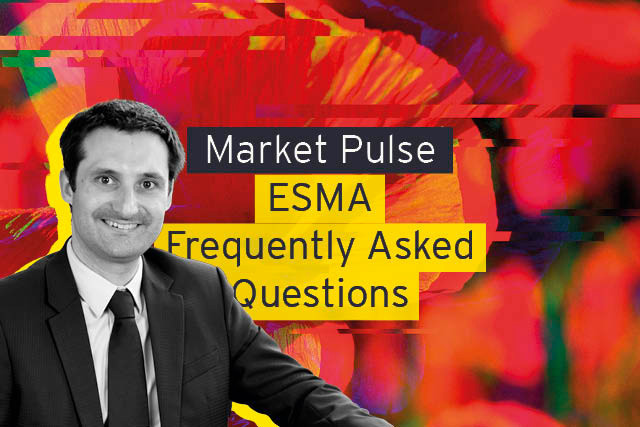On 30 March and on 28 May 2021, ESMA updated its FAQ on the application of UCITS and AIFMD to provide some clarifications on the application of the Guidelines in relation to the conditions applicable to the payment of performance fees prior to the end of the performance reference period and how to set up such period. Guidelines do not apply to registered AIFMs, unless Member States impose stricter national requirements.
ESMA’s FAQ on the application of AIFMD also clarifies the criteria to take into account to determine the application of the Guidelines to European Long-Term Investment Funds (“ELTIF”). ESMA’s FAQ also provides the conditions to determine whether the performance reference period should continue applying in case of a merger.
FAQ clarifications
1. Payment before the end of the reference period
The FAQ confirms that a five-year reference period does not prevent from paying a performance fee to the manager during the performance reference period of five years. Where the fund overperforms the reference indicator, the positive accrual may be crystallised as a payment. However, any underperformance should be carried forward for the purpose of the calculation of the performance fees the following year. During the reference period, a payment will only be possible when the fund overperforms the reference indicator and recovers all past underperformance against the reference indicator.
2. Setting up the reference period
Where the fund already used a model ensuring recovery of past underperformance compliant with the Guidelines before the application date of the Guidelines, managers should look at the past five years, any longer period or the whole life of the fund for the purpose of setting the performance reference period and should not reset the reference period after the application date of the Guidelines. In other cases, managers should apply the performance reference period starting from the beginning of the financial year following 5 July 2021.
3. Mergers
In the case of a merger where the receiving UCITS or AIF is a newly established fund with no performance history and the national competent authority of the receiving UCITS or AIF assesses that the merger does not substantially change the UCITS’ or AIF’s investment policy, the performance reference period of the merging UCITS or AIF should continue applying in the receiving UCITS or AIF.
4. Application to ELTIFs
The Guidelines apply to ELTIFs fulfilling all below conditions:
• They are marketed to retail investors. • Their shares or units can be repurchased or redeemed prior to the commencement of their liquidation or wind down in accordance with the prospectus and frequency set out in their rules or instruments of incorporation, prospectus or offering document. • They are not private equity, venture capital or real estate ELTIFs.
5. Registered AIFMs The Guidelines do not apply to registered AIFMs referred to in Article 3(2) of the AIFMD. However, Member States may decide to impose stricter requirements on registered AIFMs and to allow them to market AIFs to retail investors in their territory, in accordance with Articles 3(3) and 43(1) of the AIFMD. In such cases, National Competent Authorities may also decide to apply the Guidelines to registered AIFMs.
You can read the full version of this article on
Find the more than 40 pages of market pulse regulatory news on
